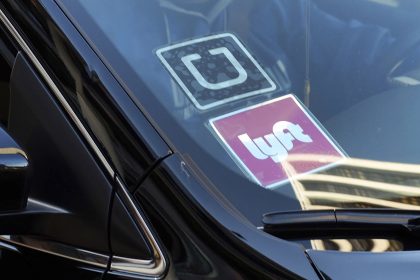COVID-19 Is About to Make Our Affordable Housing Crisis Much Worse. Here’s One Way to Help Stem the Tide
COMMENTARY

Even before the COVID-19 pandemic created a global economic downturn, the U.S. faced a mounting affordable housing crisis. In March, the National Low Income Housing Coalition estimated that the U.S. needs at least 7 million more affordable units to sufficiently house extremely low-income Americans. With more than 30 million Americans currently filing for unemployment, the already growing need for affordable housing will only become more acute.
We need to look for immediate, cost-effective solutions to keep people housed today — and in the months and years of economic recovery ahead of us. In the next stimulus bill, changing a single relatively obscure regulatory requirement could effectively double the production and preservation of affordable housing in high-need areas.
What is this requirement? To keep construction financing costs low, the federal government has historically required that at least half of the total capitalization for affordable housing projects using 4% Low-Income Housing Tax Credits (LIHTC) come from Private Access Bonds (PABs), tax-exempt municipal bonds that the government issues on behalf of private businesses to pay for economic activity that benefits the public, like building affordable housing, roads, or hospitals. PABs offer these lower financing costs to businesses for up to 27 different types of investments, 14 of which are subjected to something called “volume cap.”
Each state has a volume cap for PABs based on population, regardless of the state’s growth trajectory or economic needs. Historically, very few states have ever hit the volume cap. Yet, as the affordable housing crisis has grown more acute, PABs for residential housing have ballooned and many high-need states are starting to hit their volume cap ceiling, including California, Colorado, Georgia, Minnesota, New York, and Washington.
When all the PABs are used, affordable housing projects — both new construction and rehabilitation and preservation projects — are shelved. This problem is only growing and is likely to start popping up in other states, like Tennessee and Connecticut.
The current federal law, which requires 50% of a project’s cost to be financed with tax-exempt bonds, has been in place since 1989. Today’s incredibly low interest rates mean changing this requirement would have minimal budgetary impact. Simply reducing the requirement to 25% would eliminate the growing volume cap problem overnight.
This is a smart, immediate way to put hundreds of shovel-ready projects into motion, quickly doubling the creation and preservation of affordable housing in high-need areas by tapping into existing pipelines. At the same time, it would support construction industries facing a dramatic slowdown in work.
This change would not require additional government spending. It would simply make the 4% LIHTC program more effective in the places that need it the most. This investment lasts a long time. New LIHTC projects house low-income residents for 30 years and LIHTC-backed renovations add 15 years of affordability to homes. These types of renovations are especially important in reversing two worrying trends: the declining quality of existing affordable homes and the conversion of affordable housing into market-rate housing, which pushes out low-income tenants.
There are multiple economic and public health benefits that come from stable housing. Affordable housing can even prevent the spread of infectious diseases because, as the National Housing Conference puts it, “when housing is not affordable, families may be forced to double up with others or to otherwise live in overcrowded conditions.” In fact, study after study shows that having stable, quality, affordable housing dramatically improves health outcomes in a number of ways, from increasing preventable care use, to freeing up resources for food expenses, to even preventing the development of chronic diseases.
As the public, private, and non-profit sectors come together to look for solutions to address the dire need for affordable housing, this simple regulatory change would empower the people who provide housing to low-income renters — often working families, senior citizens, and disabled Americans — to continue to ensure that these homes are high-quality and long-lasting. Now is the time for the Federal Government to make a lot of people’s lives better with a small regulatory change. Changing PAB requirements will enable a long-standing and successful public-private partnership to do even greater good for vulnerable Americans.
Jeremy Bronfman is the CEO of Lincoln Avenue Capital.
























